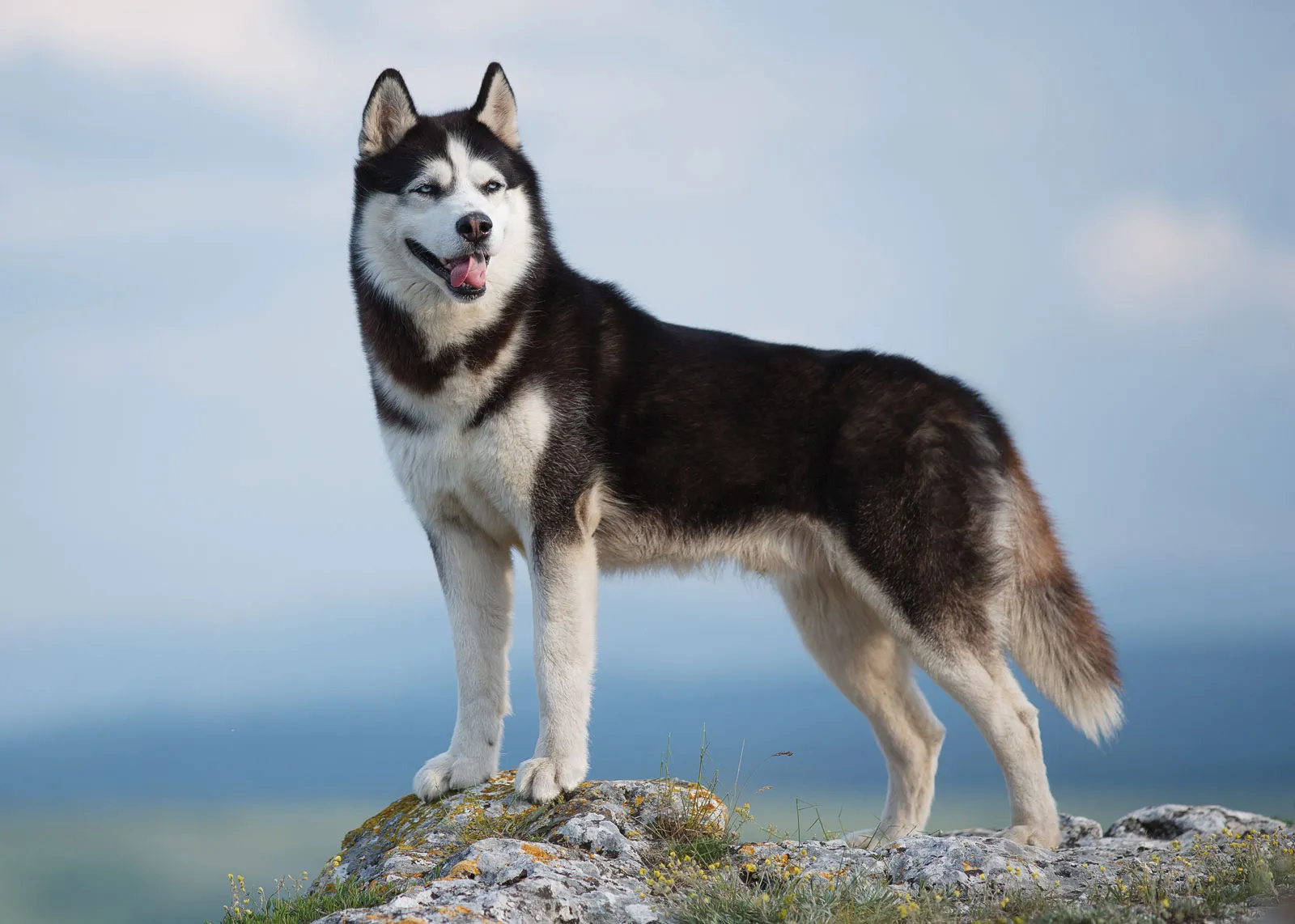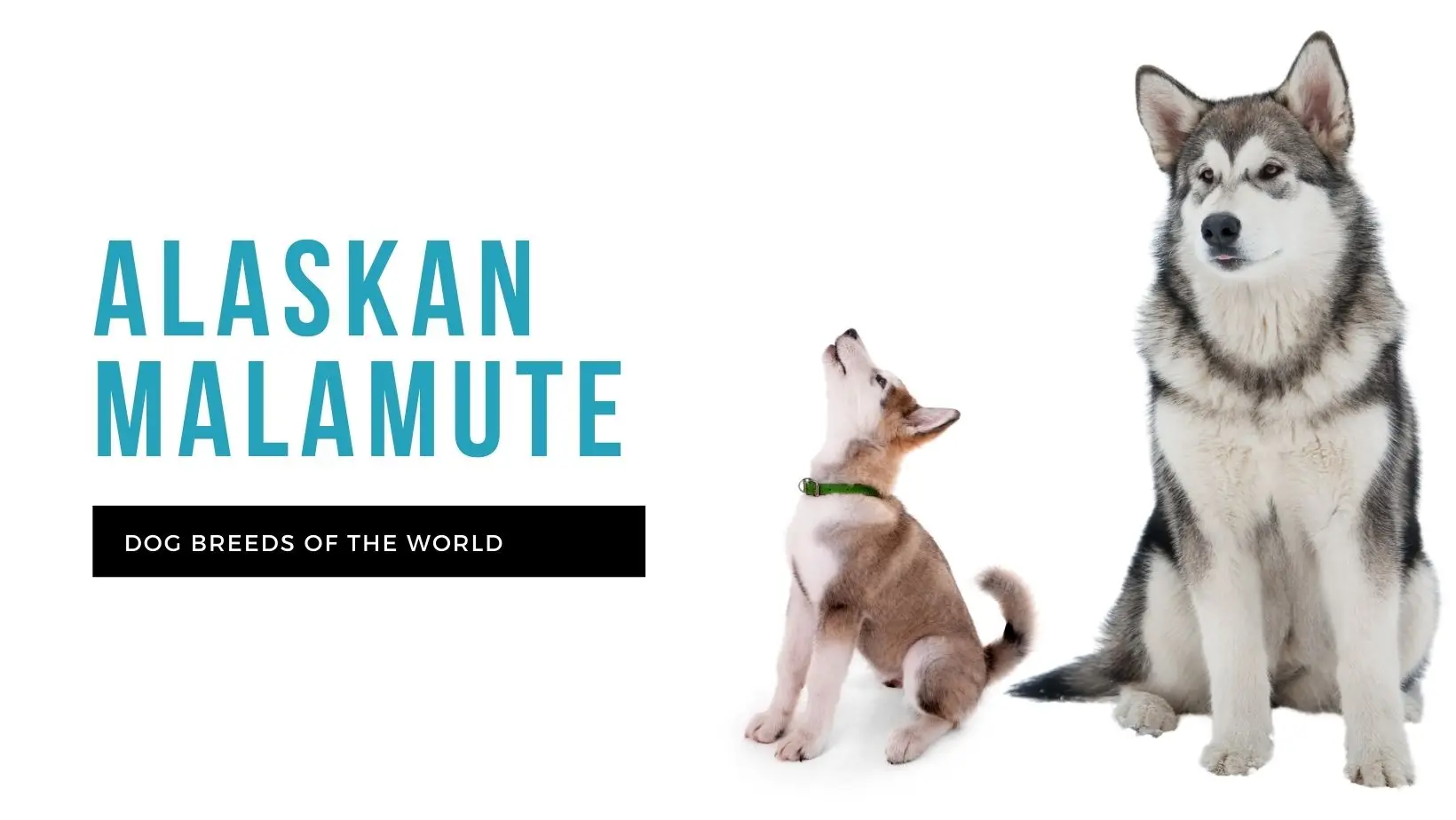Comprehensive Guide on Siberian Husky: Full Details, Training, Care, Pros, Cons, and Price
The Siberian Husky is one of the most popular and beloved dog breeds in the world, known for its striking appearance, boundless energy, and friendly demeanor. With their thick double coat, wolf-like appearance, and blue or multi-colored eyes, Huskies are a true standout in the canine world. Originally bred by the Chukchi people in Siberia for pulling sleds, Siberian Huskies have evolved into loyal companions, energetic playmates, and hard-working dogs.
However, despite their charm, they are not a breed for everyone. They require special care, attention, and training to ensure they thrive. This comprehensive guide will walk you through all aspects of owning a Siberian Husky—from their physical traits, training needs, and care requirements to their pros and cons, and finally, their price.
1. Introduction to Siberian Husky
🧭 Origin and History
- Country of Origin: Siberia, Russia
- Original Purpose: Sled dogs for pulling light loads over long distances in harsh Arctic conditions
- Recognition: The American Kennel Club (AKC) recognized the Siberian Husky in 1930.
- Name Significance: “Siberian” refers to the Siberian region where they were bred, and “Husky” is derived from the term “Huskie,” meaning a type of working dog from cold climates.
Siberian Huskies were originally bred by the Chukchi people in Siberia to pull sleds over frozen terrain. Their endurance, strength, and ability to work in freezing temperatures made them invaluable companions for Arctic travelers. Huskies later made their way to the United States in the early 20th century, where they gained popularity for their striking looks and friendly nature.
🌟 Physical Characteristics
- Size: Medium-sized
- Height: 50–60 cm (20–24 inches)
- Weight: 16–27 kg (35–60 lbs)
- Coat Type: Thick double-layer coat, dense undercoat with a soft topcoat
- Lifespan: 12–15 years
- Eye Color: Blue, brown, green, or bi-colored (one blue, one brown)
- Colors: Red, gray, black, or pure white, often with contrasting markings on the face and body
The Siberian Husky’s physical appearance is one of the main reasons for its popularity. They have a strong, athletic build with a thick, fluffy coat that allows them to withstand cold climates. Their eyes, which are often blue or bi-colored, give them an almost mystical appearance. Their distinctive mask-like facial markings, erect triangular ears, and bushy tails make them one of the most recognizable breeds.
2. Siberian Husky Behavior and Personality
🧠 Temperament
Siberian Huskies are known for their friendly and outgoing nature. They are not aggressive and tend to get along well with children, other dogs, and even strangers. However, they are also very independent and strong-willed, which can sometimes make them a challenge to train. Here are some key behavioral traits:
- Energetic: Huskies are incredibly active and require a lot of physical exercise. They enjoy activities like running, hiking, and playing fetch, making them a great companion for active individuals or families.
- Social: Siberian Huskies are social dogs and enjoy spending time with their human families. They are known to form strong bonds with their owners.
- Intelligent: Huskies are highly intelligent, but they can be independent and stubborn, which sometimes makes training challenging.
- Vocal: Huskies are known for their vocalizations, which can include howling, barking, and “talking” (a variety of sounds). Some owners find their howling charming, while others may find it noisy.
- Escape Artists: Due to their history as working sled dogs, Huskies have an instinctual drive to roam. If not properly contained, they may attempt to escape from yards or homes to explore their surroundings.
🐾 Socialization and Interaction
Huskies are not known to be overly protective or territorial, which makes them good with other dogs and pets. They enjoy human companionship and are generally good with children, though their energetic nature means they may unintentionally knock over younger children during playtime. Early socialization and positive interactions with other animals are essential to ensure a well-adjusted Husky.
3. Training a Siberian Husky
🎓 Training Challenges
Training a Siberian Husky can be a rewarding experience, but it requires patience, consistency, and the right techniques. They are intelligent but can be independent and sometimes stubborn, making them more challenging to train compared to other breeds. Here are some key training points:
- Start Early: Begin training and socialization at a young age to avoid behavioral issues later in life. Introduce your Husky to various people, pets, environments, and sounds to ensure they grow up to be well-adjusted.
- Positive Reinforcement: Huskies respond well to positive reinforcement, such as treats, praise, and playtime. Avoid harsh punishment, as it can lead to distrust and a refusal to cooperate.
- Consistency: Be consistent with commands and training sessions. Huskies can be a bit headstrong, so repetitive training is necessary to instill good habits.
- Leash Training: Because Huskies are prone to escape, proper leash training is essential. Use a sturdy harness or collar, and be sure to maintain control during walks to prevent them from pulling or running away.
- Mental Stimulation: Huskies are highly intelligent, so you should engage their minds with puzzle toys, obedience challenges, and other stimulating activities to prevent boredom and destructive behavior.
🐶 Common Training Issues
- Escaping: Due to their history as sled dogs, Huskies are natural escape artists. Invest in a well-fenced yard with high fences and avoid leaving them outside unattended.
- Stubbornness: Huskies are known to be a bit stubborn, which may lead to resistance in obeying commands. Patience and consistent training are key to overcoming this.
4. Caring for Your Siberian Husky
🍲 Diet and Nutrition
A healthy diet is crucial for your Husky’s well-being. Siberian Huskies are active dogs that require a high-quality diet to maintain their energy levels and overall health.
- High-Protein Diet: Huskies need a diet high in protein to support their muscle development and energy needs. Look for dog food that lists real meat (like chicken or beef) as the first ingredient.
- Control Portions: Huskies are naturally active, but overfeeding can lead to obesity. Measure out their food and adjust portions based on their activity levels.
- Hydration: Make sure your Husky always has access to fresh water, especially after exercise.
🏃 Exercise Requirements
Siberian Huskies require a lot of exercise to stay happy and healthy. Without sufficient exercise, they may become bored and engage in destructive behaviors. Aim for at least 1 to 2 hours of exercise each day, which can include:
- Daily Walks: Huskies love long walks, and they enjoy running as well. A few long walks each day will help burn off excess energy.
- Playtime: Huskies enjoy playing fetch, tug-of-war, and other interactive games. Regular playtime will help keep them mentally and physically stimulated.
- Run: Huskies are known for their speed and endurance, so taking them for a run can be a great way to help them release energy.
🧼 Grooming and Coat Care
Due to their thick double coat, Huskies shed heavily, particularly during seasonal changes. Regular grooming is essential to manage their shedding and keep their coat healthy.
- Brushing: Brush your Husky’s coat at least 2-3 times a week to remove loose hair and prevent mats. During shedding season (typically twice a year), more frequent brushing may be needed.
- Bathing: Only bathe your Husky when necessary, as excessive bathing can strip their coat of natural oils.
- Ear and Eye Care: Check their ears regularly for dirt or infection, and clean them gently with a damp cloth. Keep their eyes clean by wiping away any discharge.
🏥 Health Care and Veterinary Visits
Siberian Huskies are generally healthy dogs, but like all breeds, they can be prone to certain health conditions, including:
- Hip Dysplasia: A hereditary condition where the hip joint doesn’t develop properly, causing pain and mobility issues.
- Eye Problems: Huskies are prone to eye conditions like cataracts and progressive retinal atrophy.
- Hypothyroidism: This condition affects the thyroid gland, leading to weight gain and skin problems.
Regular check-ups with a vet, along with a balanced diet and exercise, will help keep your Husky in peak condition.
5. Pros and Cons of Owning a Siberian Husky
✅ Pros
- Beautiful Appearance: Huskies are stunning dogs with their thick coats, bright eyes, and striking facial markings.
- Energetic and Active: Ideal for active families or individuals who enjoy outdoor activities like running, hiking, or playing fetch.
- Great with Children: They are known for being good with children and can make excellent family pets.
- Social and Friendly: Huskies are friendly and social, getting along well with other pets and people.
❌ Cons
- Independent and Stubborn: Huskies can be challenging to train due to their independent nature.
- High Exercise Needs: They need plenty of exercise, which can be difficult for owners with busy lifestyles.
- Escape Artists: Huskies are notorious for finding ways to escape from yards and homes.
- Shedding: Their thick coat sheds heavily, requiring regular grooming.
6. Price of a Siberian Husky
The cost of a Siberian Husky varies depending on factors such as location, breeder reputation, and whether the dog has been registered with kennel clubs.
- Price Range: Typically, a purebred Siberian Husky will cost between $800 to $1,500 USD, but prices can go higher for dogs with championship bloodlines or special markings.
- Additional Costs: Besides the initial cost of the dog, ongoing costs include food, grooming supplies, veterinary visits, vaccinations, and pet insurance.
In conclusion, Siberian Huskies are amazing companions for the right owner. They require a lot of attention, exercise, and training but offer unmatched loyalty, beauty, and energy in return. If you’re prepared to invest the time and effort, a Husky can be a truly rewarding dog to have in your life.




